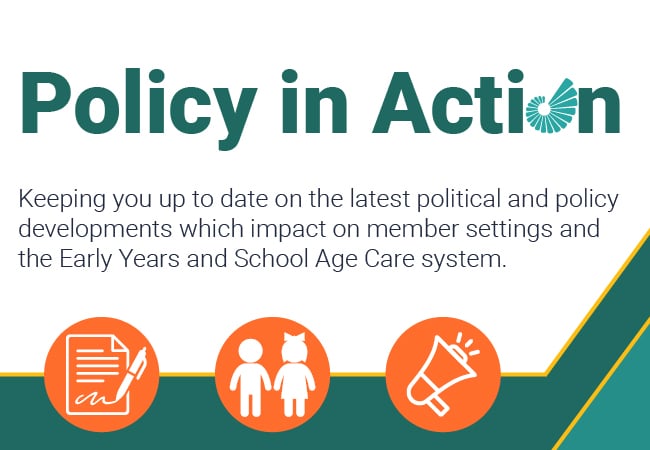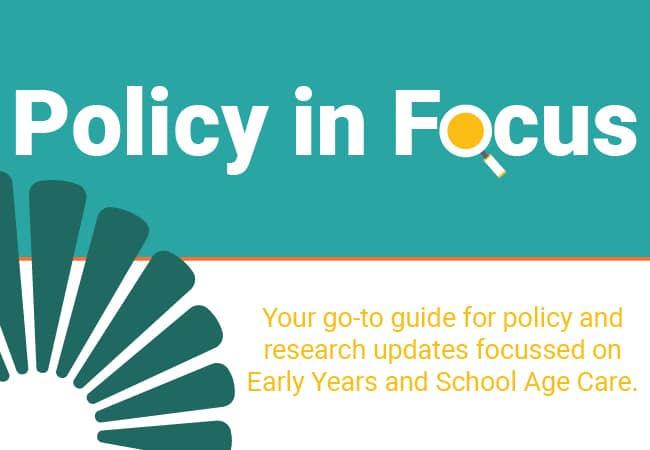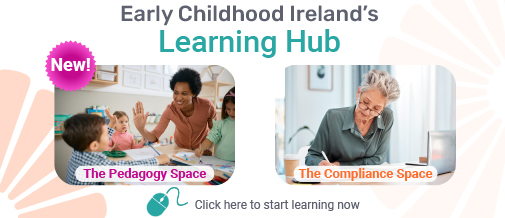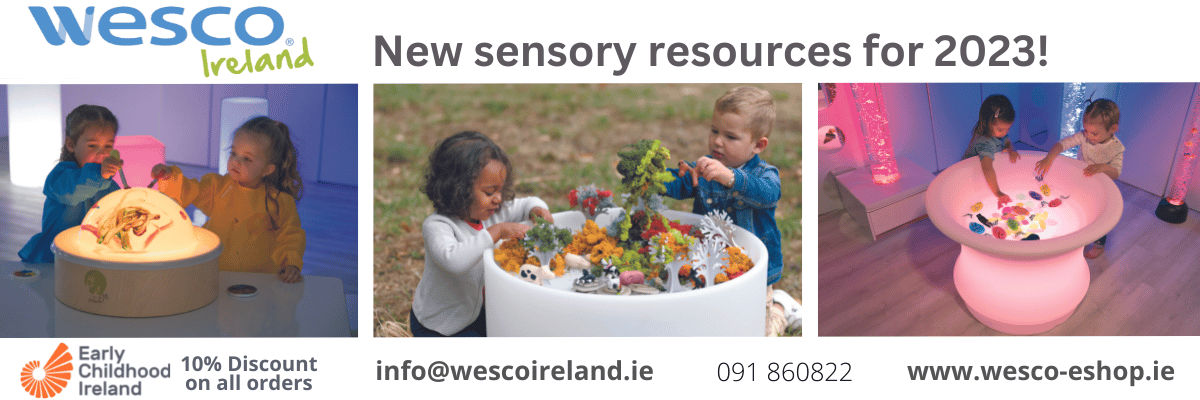Always questioning; just for curiosity

‘The important thing is not to stop questioning. Curiosity has its own reason for existing’ – Albert Einstein
I came across this quote recently. The concept of curiosity intrigues me. I think we have a mixed, ambivalent attitude to the idea of curiosity, especially when it comes to young children. We value the outcomes of it: creative endeavours, technological devices and innovations, medical advancements, all are hailed, and rightly so, as marvellous developments and the inventors, researchers and artists are applauded.
Curiosity is one of the dispositions for learning featured in Aistear. Síolta also refers to the role of the environment in stimulating curiosity. But when a two-year-old says ‘Why’…. Are they praised? Sometimes of course, but often, they’re shushed, and maybe told not to ask questions or not to be nosey or cheeky.
But it is in these early years that curiosity begins. From their earliest days babies are figuring out and questioning. They’re looking to see how can they roll over, wondering what that object is, what sound does this make? And they discover what happens when they make sounds. Have you seen the delight on parents faces when those babbles sound like Mama or Dada? It’s curiosity that drives babies up on their feet and to toddle. And as they gain speech, they discover the key words: Why, How, What and their voyage of discovery begins in earnest.
I’m always fascinated by the gaze and eye contact that babies and toddlers have. Have you ever walked down a street or maybe you’ve been sitting in a restaurant, and had that feeling that someone is looking at you? So often I see a compelling stare from a young child in a buggy or highchair or parent’s arms. ‘Look at me’, it says, ‘notice me, I’m interested in people, I want to know if you will engage with me’. And then the big smile when you smile back, or sometimes the shy look and hiding behind Mammy’s shoulder when they discover their power: that just by smiling, or gazing, they can get someone to smile back, or say hello! That can be quite a feeling, and possibly a bit overwhelming! But it’s a sense of curiosity that drives that desire to see how people react to them.
As children get older this game can lose its charms, especially for parents, as the harder questions begin. It can be both embarrassing and amusing. My mother tells the story of bringing me, aged about two, to see my Dad’s elderly aunt, a nun. Apparently, I asked a fellow nun in the convent to know why she had hair on her face! I just wanted to know, I guess, but I’m sure my mother wished at that point that I was not so curious! When I visit Early Years settings, I’m always asked ‘What are you doing here?’ ‘Why is your hair that colour’, ‘whose Mammy are you?’ And as we all know, if the answer isn’t satisfactory, there’s another ‘But why?’
If we agree that curiosity has its own reason for existing, we might need to think about how we support children to be curious and to value that curiosity, even as we accept that there are times it may make us a bit uncomfortable or embarrassed. And it should help to remind ourselves that most people don’t take the remarks and questions of young children too personally!
How do we encourage and value curiosity? Here are a few ideas and suggestions.
- Provide plenty of opportunities for play and with open-ended materials, especially outside
- Giving children time to figure things out and experiment, just slowing it all down
- ‘Wondering’ with children, for example: ‘I wonder what would happen if we put that flower in dyed water?’, ‘I wonder why the water in the water tray is icy this morning?’
- When children ask a question, sometimes turn the question back to them, for example, what do you think?
- Look things up together, a good way to link technology into everyday practice
- Try to hide the smiles or laughter when a child asks a question that we might find amusing. If it is a question that might be embarrassing, kindly explain to the child that some questions are better asked quietly. And if a child asks a question of you, and an adult tells them to stop, I just say, “I don’t mind, that’s how they learn.”
Lisa Poppe, in a University of Nebraska online article says ‘Children learn from their mistakes. Part of learning is experimentation. A child should never be afraid to try out an idea. Parents need to help and encourage children when choices turn out to be mistakes. A mistake can become a learning experience, or it can lay the groundwork for your child to never try again’.
So, let’s try to embrace the curiosity, and never stop questioning.









